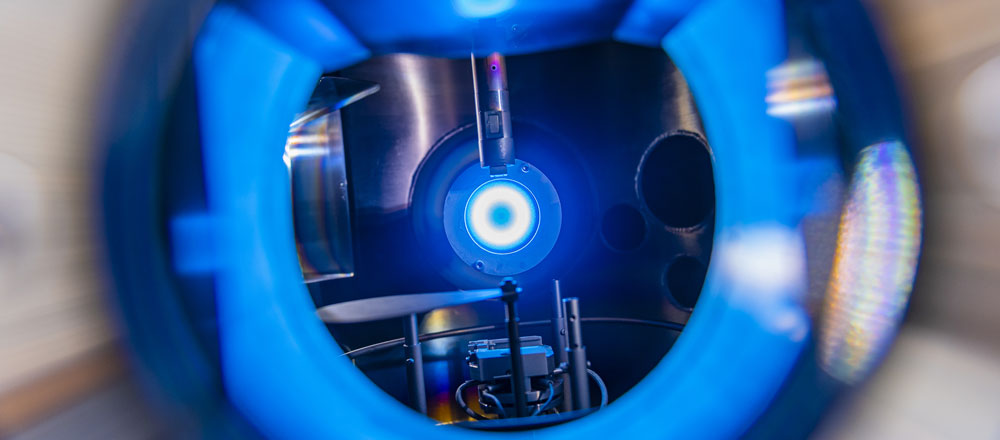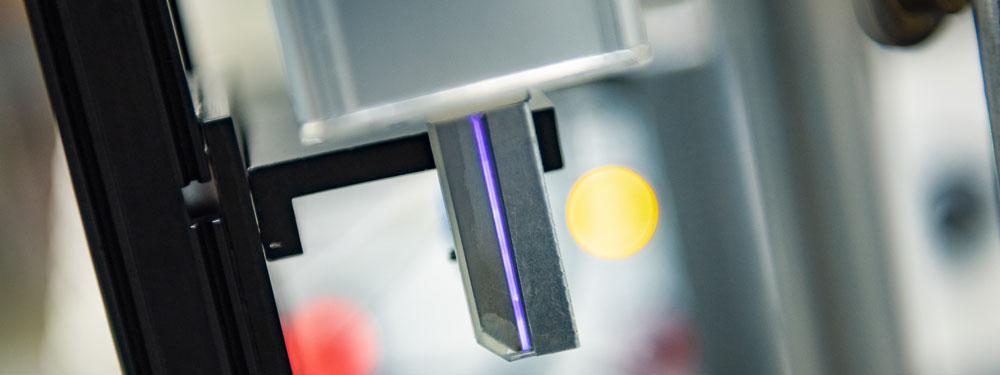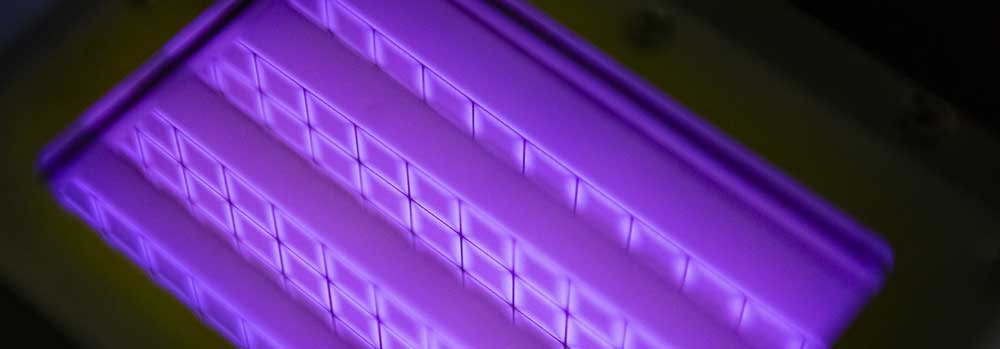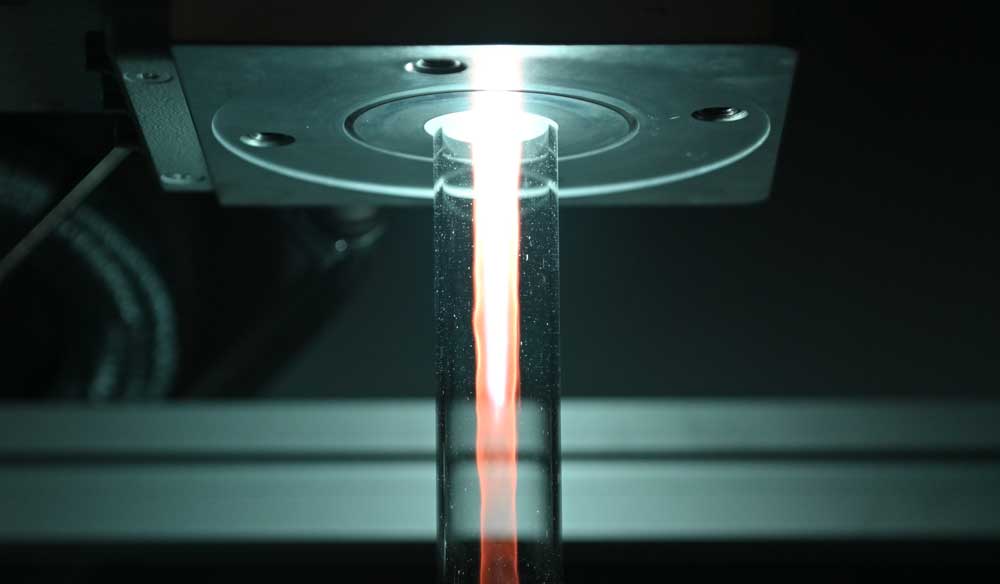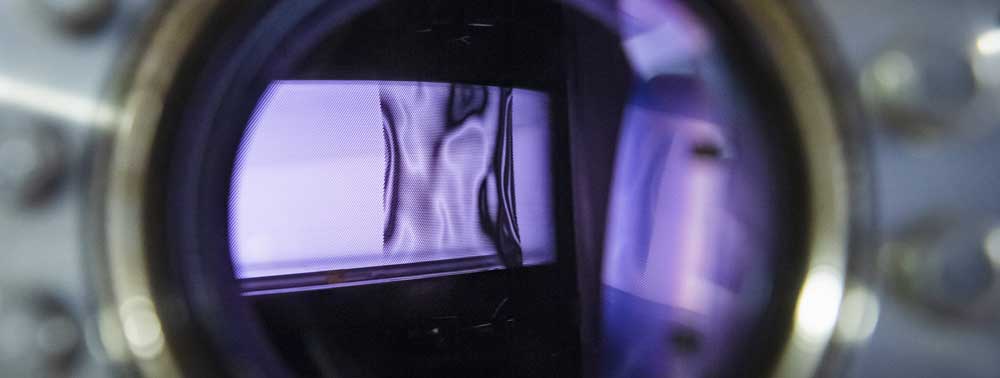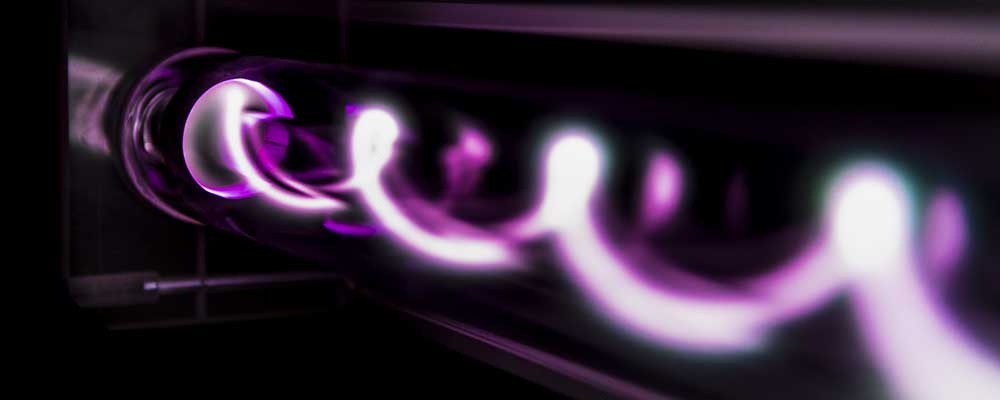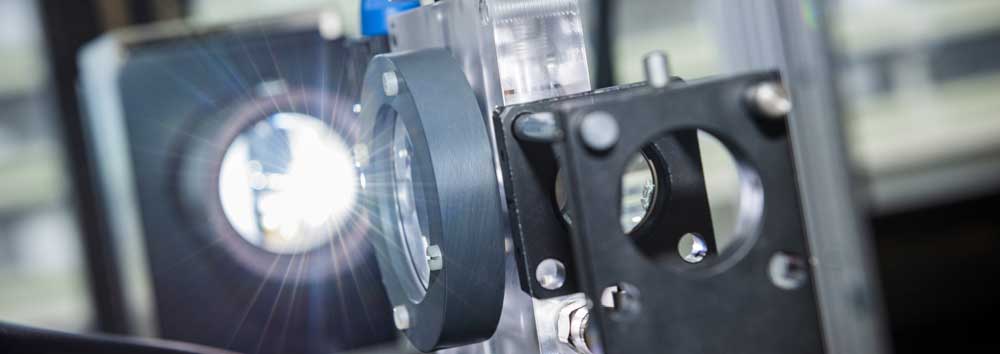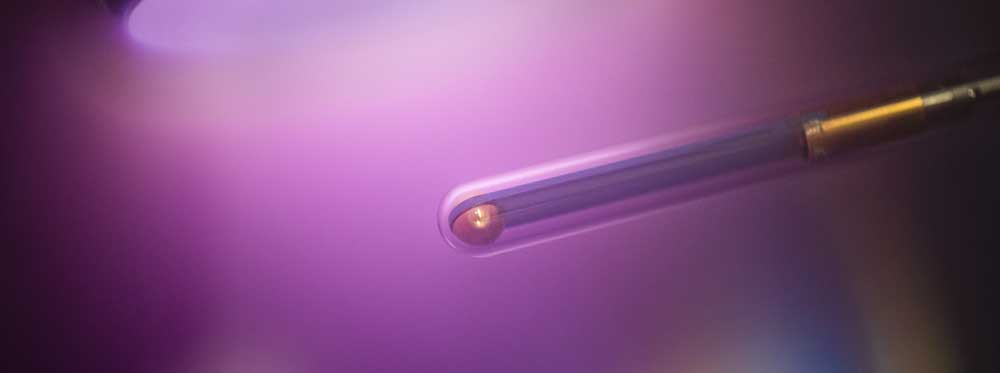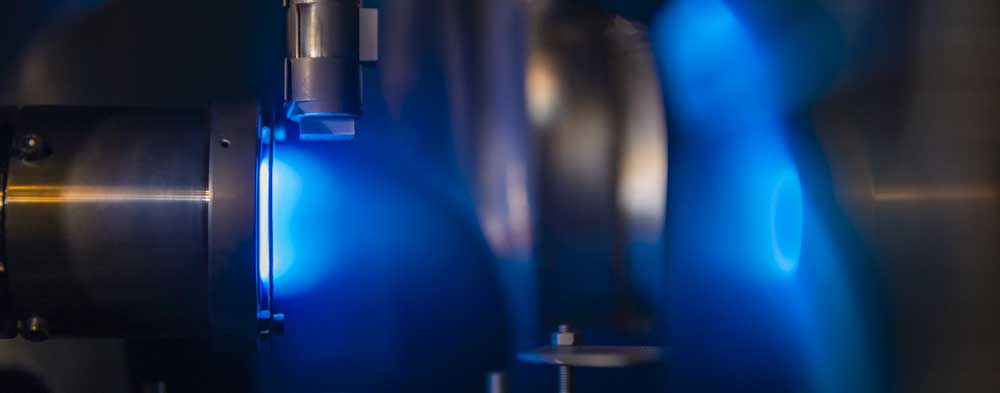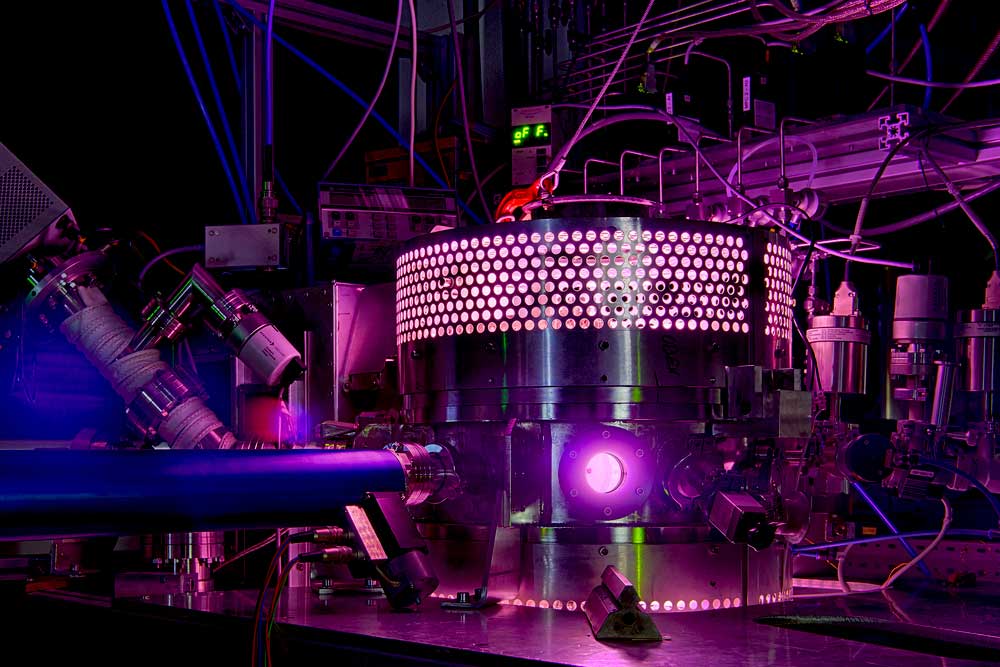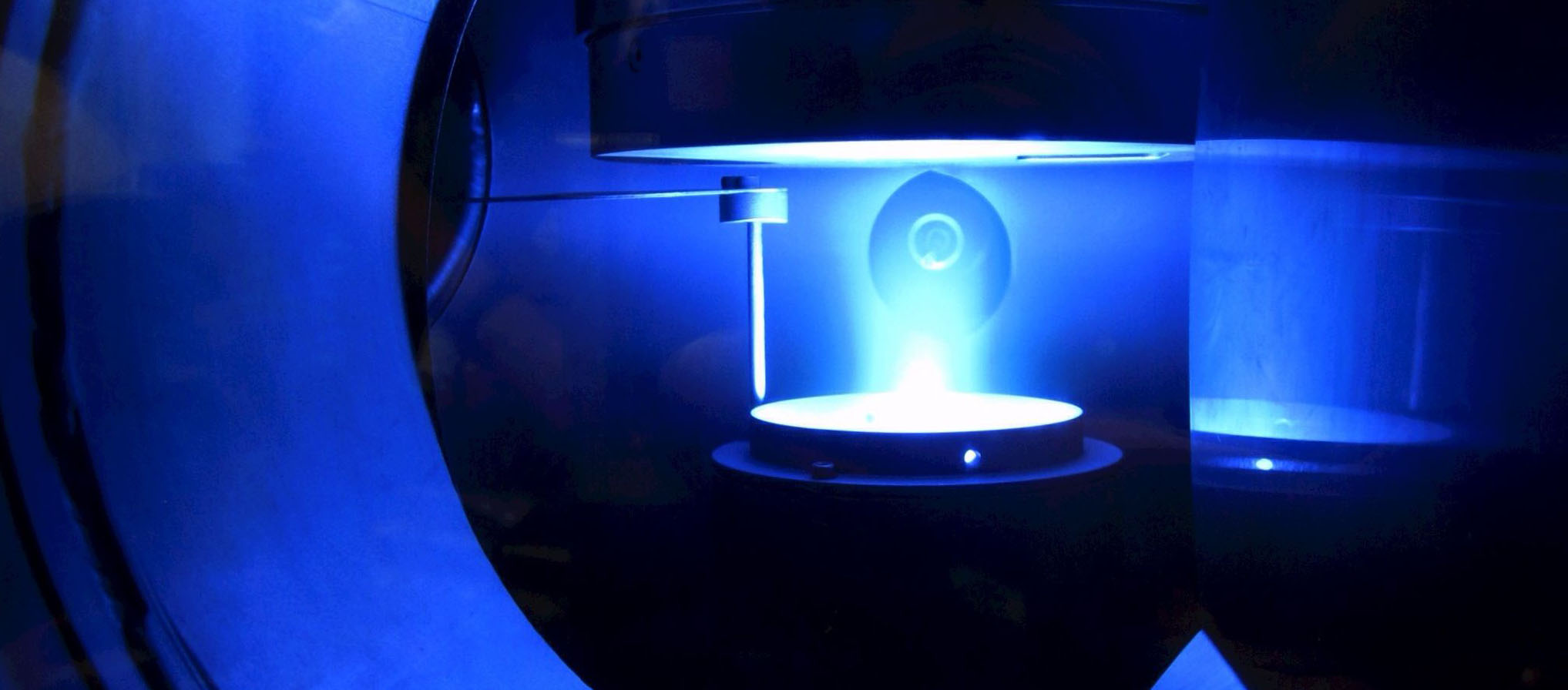A3 - Plasma SourcesPlasma Bullet JetA plasma bullet jet is developed to monitor post-plasma |
- Details
Conference
SFB participated at IWM 12 in Orleans
 The 12th International Workshop on Microplasmas in 2024 has been held in Orleans, France, from June 3rd to 7th. One Invited, five Contributed talks, and two posters were presented by scientists from Ruhr University Bochum. The conference venue was the Museum Des Beaux-Arts with a nice location and environment in the centre of Orlean. The workshop covered wide topics on the microplasma sources and their generation in the gas phase or liquid dealing with interface behaviour from one side and diagnostics of microplasma sources and their application in material processing, plasma medicine, agriculture, etc. The modeling section provides research on the numerical simulation of streamer dynamics to the 0D Global kinetic model. Very insightful talks and discussions which in the end led to the overall view of microplasma's fundamental aspects and their application.
The 12th International Workshop on Microplasmas in 2024 has been held in Orleans, France, from June 3rd to 7th. One Invited, five Contributed talks, and two posters were presented by scientists from Ruhr University Bochum. The conference venue was the Museum Des Beaux-Arts with a nice location and environment in the centre of Orlean. The workshop covered wide topics on the microplasma sources and their generation in the gas phase or liquid dealing with interface behaviour from one side and diagnostics of microplasma sources and their application in material processing, plasma medicine, agriculture, etc. The modeling section provides research on the numerical simulation of streamer dynamics to the 0D Global kinetic model. Very insightful talks and discussions which in the end led to the overall view of microplasma's fundamental aspects and their application.
- Details
New project B15
A new project B15 of Bastian Mei on plasma-induced photocatalysis has been granted
The DFG just granted a new project fro Prof. Bastian Mei from the RUB chemistry department. Plasma-assisted modification is an emerging route to modify surface and bulk properties of semiconducting oxides and in turn alter their catalytic properties in light-driven processes, including reactions of high relevance such as the photo(thermal) removal of volatile organic compounds (VOC) or the photocatalytic conversion of carbon dioxide. Plasma-assisted processing primarily evolves around the treatment of (ferroelectric) nanoparticular materials using Corona discharges and plasma processing in liquid or gas phase using for example a Dielectric barrier discharge (DBD) plasma to induce formation of shallow-level defects while maintaining the structural and chemical integrity of the presynthesized material. Thus, plasma-treatment offers advantages over conventional treatment strategies of metal oxides including doping by foreign elements or high temperature treatments for modification. Despite the generally observed positive impact of plasma-treatments on the (photo)catalytic performance, there is limited research reporting systematic investigations of plasma-induced surface modification and doping processes by correlating plasma properties with the (photo)catalytic characteristics of the treated materials. Particularly interactions of the various radicals and excited species with surfaces of metal oxide (photo)catalysts have not received sufficient attention yet. Based on this understanding the work of B15(N) evolves around the systematic investigation of plasma-induced modification of presynthesized ferroelectric nanoparticles using well-characterized plasma sources to develop correlations and thus link plasma-treatment conditions and (photo)catalytic activity.
- Details
Workshop
Third Workshop on Research Data Management in Plasma Science at Kiel University

In the last few days, Kiel University hosted the third workshop on research data management in plasma science. This event was a collaborative effort, jointly organized by the INP Greifswald, Kiel University, and the University of Bochum. The workshop attracted a diverse audience, with 19 participants attending in person and approximately 30 joining online, eager to delve into the latest advancements and discussions in the field.
The workshop included different talks from researchers, facilitating a rich exchange of ideas and knowledge. Participants had the opportunity to explore various aspects of research data management.
This year's workshop placed a particular emphasis on electronic labbooks. A dedicated hands-on session provided participants with practical experience, demonstrating how electronic labbooks can seamlessly integrate with both simulation research and experimental work. This approach not only highlighted the advantages of digital tools in managing research data but also fostered a deeper understanding of their application in real-world scenarios.
- Details
Debate
Large Language Models for Plasma Research - Curse or Blessing?
Large language models (LLM) such as ChatGPT and others may change the way we do research. These systems serve as a tool for literature searches, data analysis and performing programming tasks. But what are the potentials of LLMs and their shortcomings, especially regarding the very interdisciplinary plasma research?
The advent of large language models (LLM) such as ChatGPT and others will change the way we gather, process and present scientific findings. LLMs are based on collecting information from the internet and composing answers based on the likelihood of succession of words. Thereby, the most common statements and phrases are amplified, hoping these common information pieces are correct. This might, however, not necessarily be true, and the amplification of wrong statements may distort any thorough assessment and analysis of a topic. This is referred to as the hallucination of LLMs [1]. The ease of gathering information and creating answers in a very readable form is a blessing; amplifying wrong statements is a curse. Some publishers have already discussed this in the community and are addressing it [1-5]. But what are the potentials of LLMs and their shortcomings, especially regarding plasma research?
LLMs exhibit several advantages. (i) LLMs will change how we gather information because AI will condense information and filter out the most relevant information from the internet very efficiently, being judged by its popularity. This is very helpful for many well-defined tasks. These LLMs will presumably replace the current search engine approach for information gathering. Since plasma research is very interdisciplinary and the information is dispersed over many journals and conferences, using automated literature searches by LLMs can help. (ii) LLMs may accelerate data analysis by providing analysis concepts for filtering and fitting data with the most up-to-date algorithms. (iii) Simple programming tasks can be completed very quickly without the need to collect many different code snippets from the Internet. Usually, one or two attempts with an LLM are enough to have at least a starting version of a program if the task is not too elaborate. (iv) LLMs can generate at least a starting point for further research for most scientific topics. This is not too different from conventional research based on libraries, journal editions, or simply using a search engine. Using LLMs is much more comfortable. (v) LLMs help write scientific texts and produce highly readable output. This is their core expertise.
However, LLMs also exhibit challenges and shortcomings in doing plasma research. Doing a literature search and collecting information on a topic on the web by the LLM will not account for any accumulation or repetition of wrong statements and findings. In some cases, references given by LLMs to support arguments are wrong. The answers of an LLM may also depend on the person who is asking which will generate different outcomes for a specific scientific question. If one asks an LLM to explain very known facts, it could be correct, but it may also oversimplify things. In some cases, the explanations of LLMs are plainly incorrect. This hallucination of LLMs can be an obstacle, especially in plasma research, where the community is interdisciplinary and somewhat smaller compared to other fields. Consequently, only a few papers usually deal with a particular process or application, so the knowledge base for a specific topic is small and the statements these LLMs produce may not be robust. In that sense, the duty of any scientist to use several sources such as journal articles, textbooks, or discussions with colleagues before assessing any information is still the most important.
At the core of research is understanding fundamental principles and generating new insights or hypotheses. It is unclear whether LLMs can help here. For example, when comparing two plasma sources for a specific task, the LLM may recommend different combinations or operation parameters. However, a deep insight into the mechanisms may conclude that an entirely different discharge concept might be better suited. Commonly, statements are generated that one plasma method (such as DBD plasmas) is better than others (for example, microwave) or that “plasma” does not “work” for a particular application. The complexity of the addressed systems in plasma research is so significant that these simple answers are useless if they are not put into proper context. Since plasma research is also performed by scientists with training in other fields (such as chemical engineering, solid-state physics, etc.), these too-simple statements might not be questioned.
Finally, LLMs pose challenges for scientific journals. If one asks an LLM to explain a result or recommend a study, it necessarily collects information already published elsewhere. If the authors repeat that, they automatically repeat the research of others. This poses a challenge since LLMs allow us to quickly produce “nice” papers that only reproduce known information. This will blow up the number of published papers and dilute the “real” information going forward.
At present, there is a tendency to make it obligatory for transparency reasons to inform the reader that AI is being used to generate a manuscript or in the interpretation of a result (the authors, however, still bear full responsibility for the paper [3]). This may not be conclusive since using standard data visualisation or analysis tools and spelling software is already common without the need to be referenced. LLMs could be just another tool on that list since verification by the scientist will always be required.
In the end, it will be interesting to see how the scientific community integrates LLMs into the daily workflow. This transition is happening, but the input and guidance of critical scientists will always be necessary.
[1] ChatGPT: A comprehensive review on background, applications, key challenges, bias, ethics, limitations and future scope, Partha Pratim Ray, Internet of Things and Cyber-Physical Systems, 3, 121-154, (2023)
[2] ChatGPT: five priorities for research Eva A. M. van Dis, Johan Bollen, Robert van Rooij, Willem Zuidema & Claudi L. Bockting, Nature 614, 224 (2023)
[3] ChatGPT is fun, but not an author, H. HOLDEN THORP Authors Info & Affiliations, SCIENCE 379, 313 (2023)
[4] Exploring the potential of using ChatGPT in physics education, Yicong Liang, Di Zou, Haoran Xie & Fu Lee Wang, Smart Learning Environments 10, 52 (2023)
[5] After enabling AI it is time for the plasma community to benefit from AI – Personal view in a short perspective article, E. Kessels, Atomic Limits Blog, PMP Group TU Eindhoven, 7.5.2023
- Details
Publications
Paper on the cover of "Plasma Processes und Polymers"
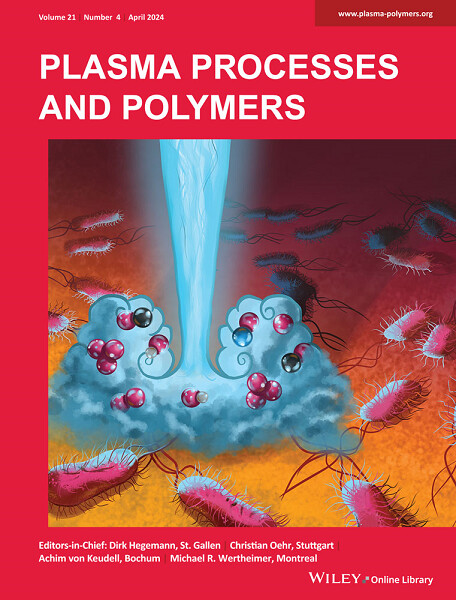 The paper by Eloise Mestre, Inna Orel, Daniel Henze, Laura Chauvet, Sebastian Burhenn, Sebastien Dozias, Fabienne Brule-Morabito, Judith Golda and Claire Douat made it onto the cover of the renowned journal Plasma Processes and Polymers. This covers the interdisciplinary field of low-temperature plasma science. Congratulations to the authors!
The paper by Eloise Mestre, Inna Orel, Daniel Henze, Laura Chauvet, Sebastian Burhenn, Sebastien Dozias, Fabienne Brule-Morabito, Judith Golda and Claire Douat made it onto the cover of the renowned journal Plasma Processes and Polymers. This covers the interdisciplinary field of low-temperature plasma science. Congratulations to the authors!
- Details
Outgoing research stay
Laboratory stay in the USA
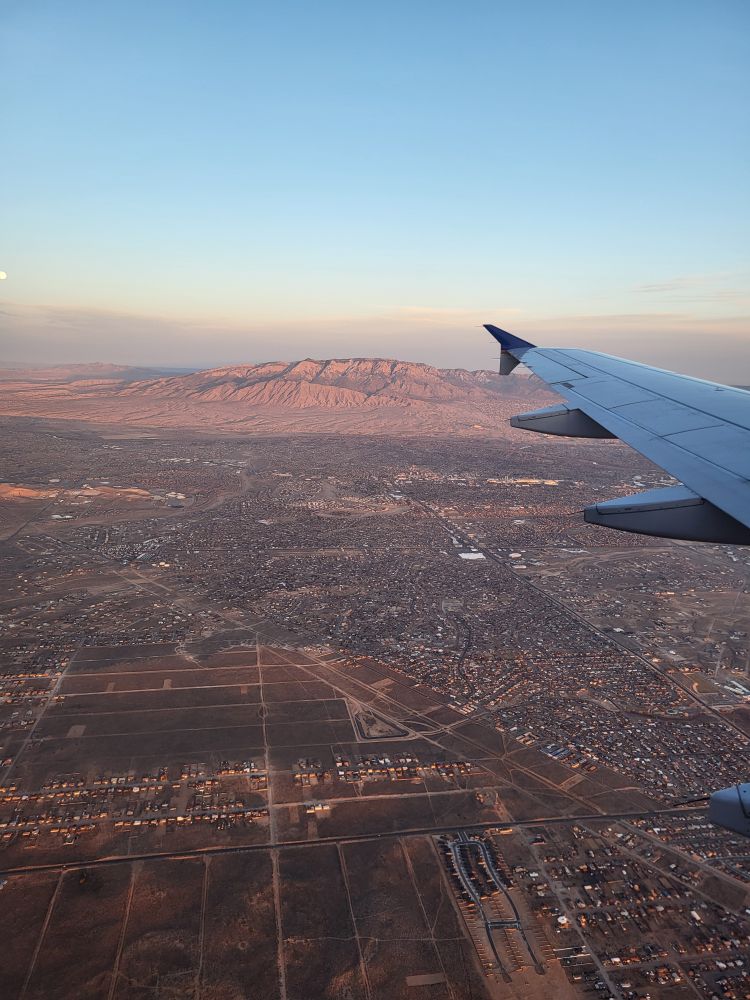
As part of his PhD, PhD student David Steuer (project A6) is spending nine weeks at the Sandia Plasma Research Facility (PRF) in Albuquerque, New Mexico, USA. Researchers can apply at PRF to submit project ideas. After a successful review process, there is then the option of using one of the excellently equipped laboratories or handing over the experiment to the cooperation partner.
The PRF also offers simulation capacities. In David's project, atomic oxygen densities are to be measured within a microcavity plasma array. A state-of-the-art picosecond laser system from the PRF can be used for this purpose.
The stay was funded by the Research School of the Ruhr-Universität Bochum (PRINT programme) and the CRC 1316.
- Details
Scientific exchange
Visit of Prof. Renato Montagnolli
Prof. Renato Montagnolli, a researcher from São Paulo State University, enriched our Collaborative Research Center with his visit from March 8th to March 19th. Professor Montagnolli's visit was made possible by a Research School Travel Grant, and co-funded by the Collaborative Research Center 1316. The main focus of his trip was to plan a joint project aimed at developing "green" pathways of protein immobilization for our plasma-driven biocatalysis.
During his stay, we had the opportunity to present our biocatalysis setup to Professor Montagnolli and demonstrate the whole process from protein purification to protein application under plasma. This interaction allowed us to jointly plan and refine important steps for the effective implementation of our project.
Another aim of his visit was to promote collaboration with future scientists. For this reason, we also targeted Bachelor students to raise awareness of the opportunities within the CRC. The SFB funding offers the chance for one person to go to Brazil for several months to test the various immobilization techniques and bring a fruitful exchange between the Research Centers.
- Details
Pupil's project week
Eventful project week full of physics and research
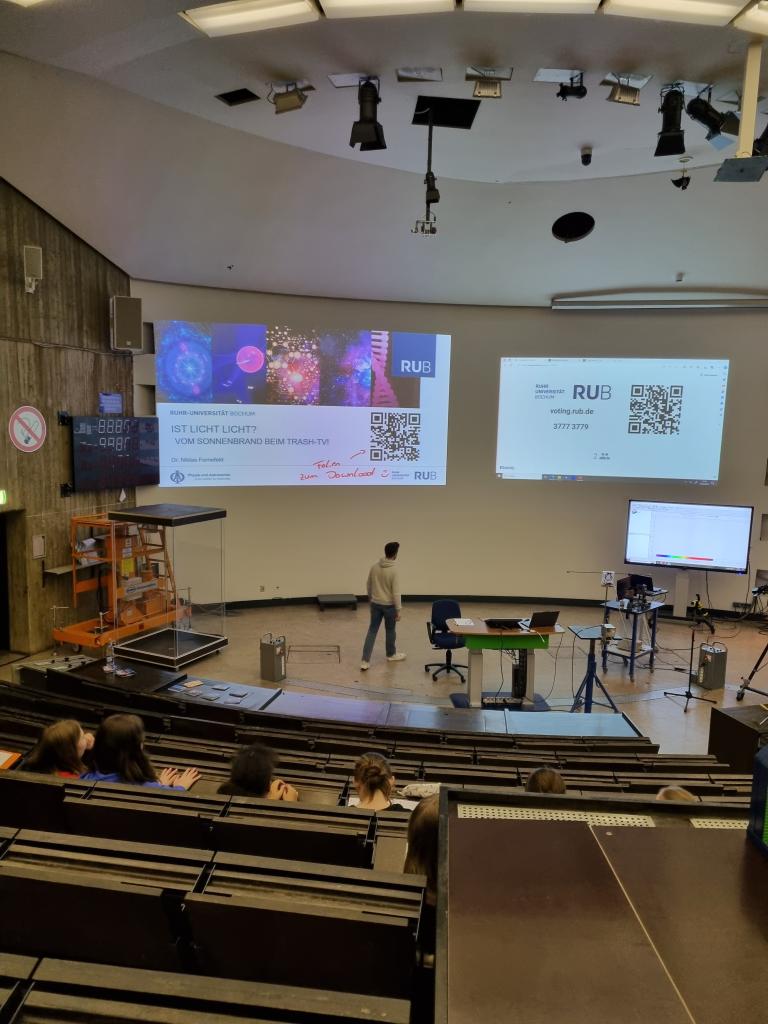
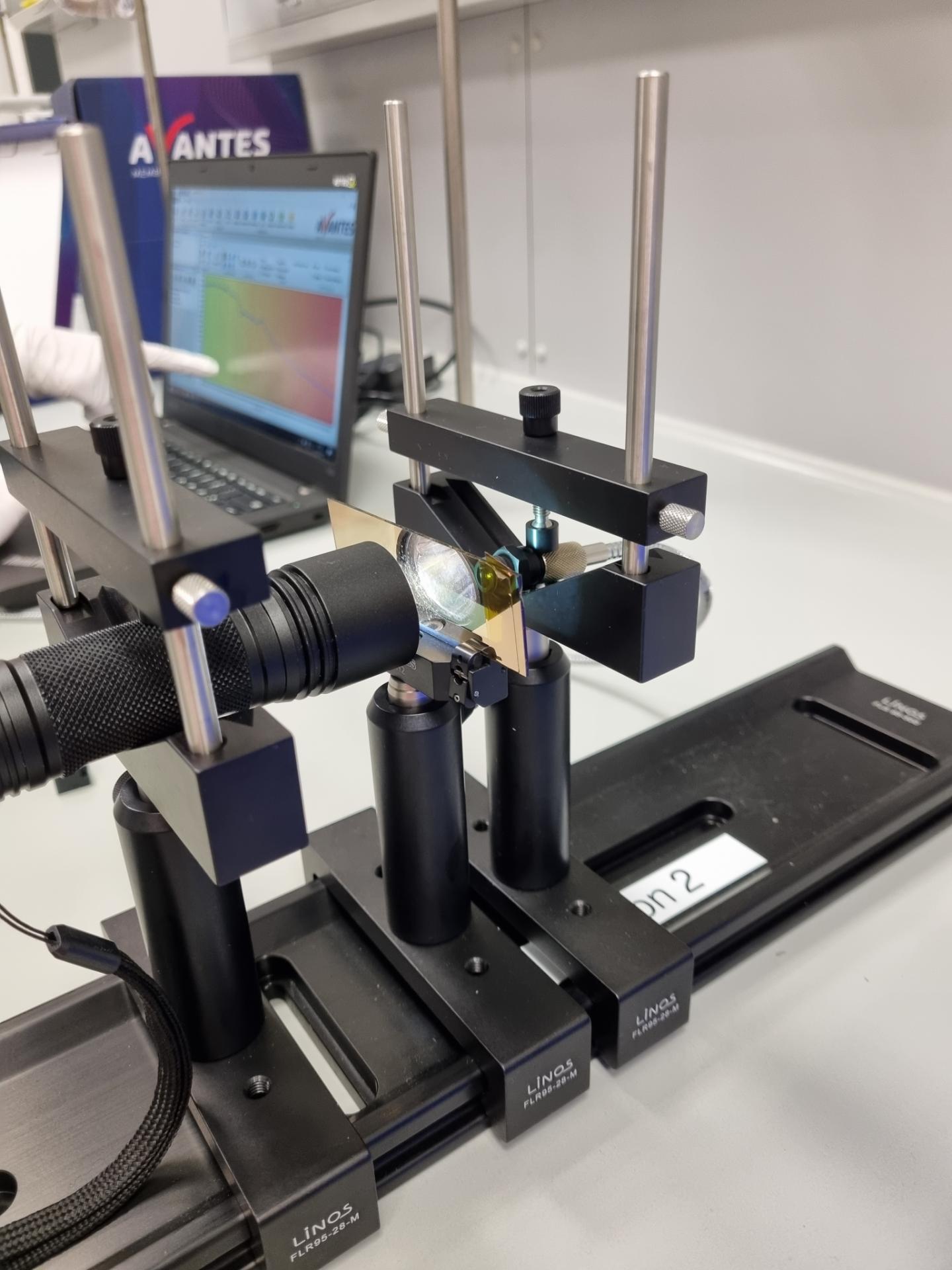
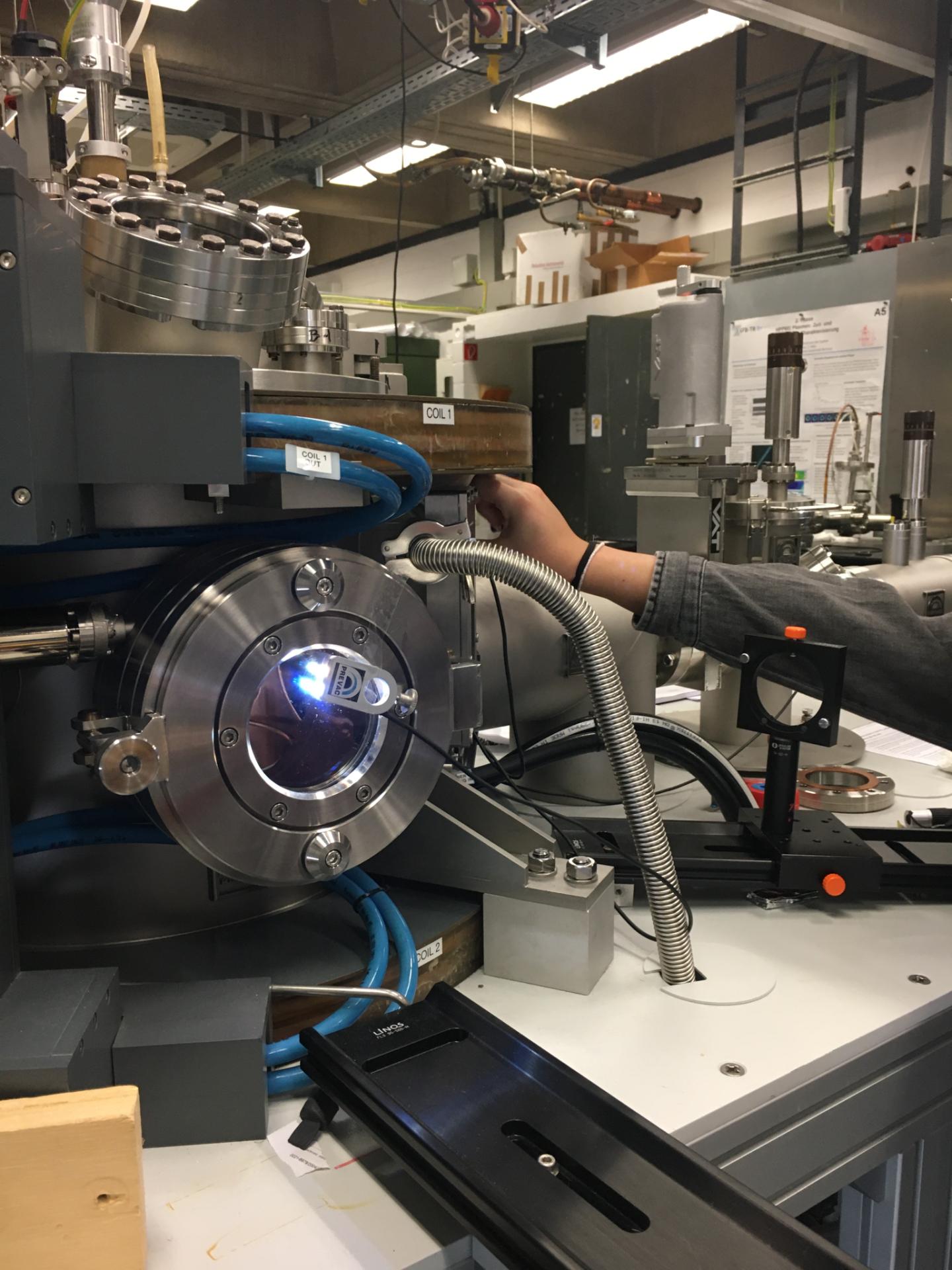
This year's schoolgirl project week took place at the RUB from March 25 to 28.
In addition to exciting workshops and experiments, the schoolgirls attended a lecture by Dr. Niklas Fornefeld on the topic of "Thermal radiation 'Is light light?' - From sunburn to trash TV", experienced current research at the RUB in laboratory tours and traveled through the vastness of space in the Zeiss Planetarium Bochum.
The highlights also included having breakfast together, lunch in the canteen and experiencing university life. This also served as an opportunity for exchange between the participants and the students.
The final event was the fiercely contested physics duel and the award ceremony for the winners. Everyone was then rewarded with a well-earned pizza!
- Details
Publication
Top 2 Ranking of the most read papers!
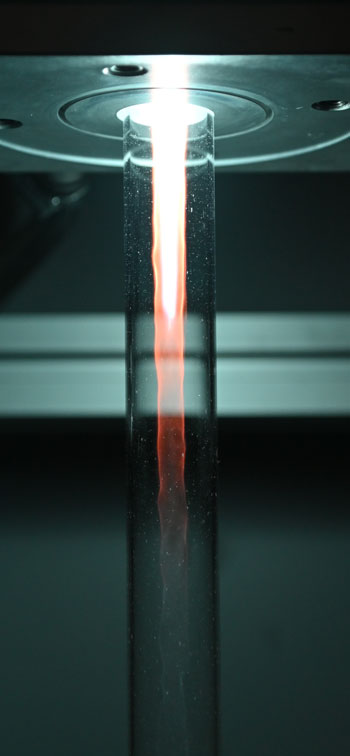 The paper entitled "Comparison of the performance of a microwave plasma torch and a gliding arc plasma for hydrogen production via methane pyrolysis" was recently published in the renowned journal "Plasma Processes and Polymers" and immediately achieved remarkable recognition and was downloaded the second most times in 2023. Simon Kreuznacht, Marc Böke and Achim von Keudell, among others, contributed to the paper. It deals with hydrogen production using plasma-heated methane pyrolysis in a microwave plasma torch (MPT) and a gliding arc plasmatron (GAP). The methane conversion, the product spectrum, the energy efficiency and the solid carbon particles produced were investigated.
The paper entitled "Comparison of the performance of a microwave plasma torch and a gliding arc plasma for hydrogen production via methane pyrolysis" was recently published in the renowned journal "Plasma Processes and Polymers" and immediately achieved remarkable recognition and was downloaded the second most times in 2023. Simon Kreuznacht, Marc Böke and Achim von Keudell, among others, contributed to the paper. It deals with hydrogen production using plasma-heated methane pyrolysis in a microwave plasma torch (MPT) and a gliding arc plasmatron (GAP). The methane conversion, the product spectrum, the energy efficiency and the solid carbon particles produced were investigated.
The second-place ranking of the most-read papers is clear proof of the relevance and influence of this research on the professional community.
Congratulations to the authors!


